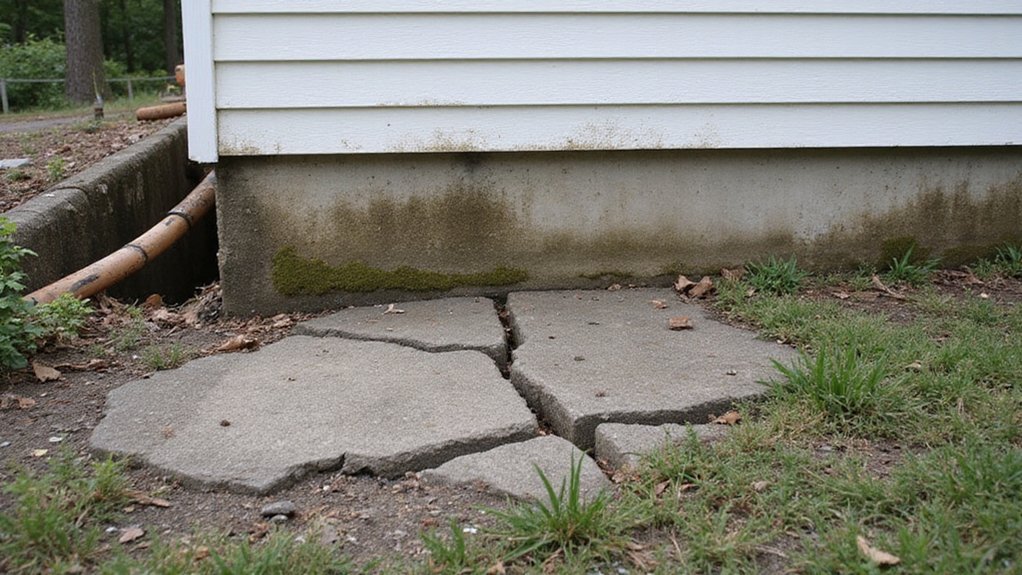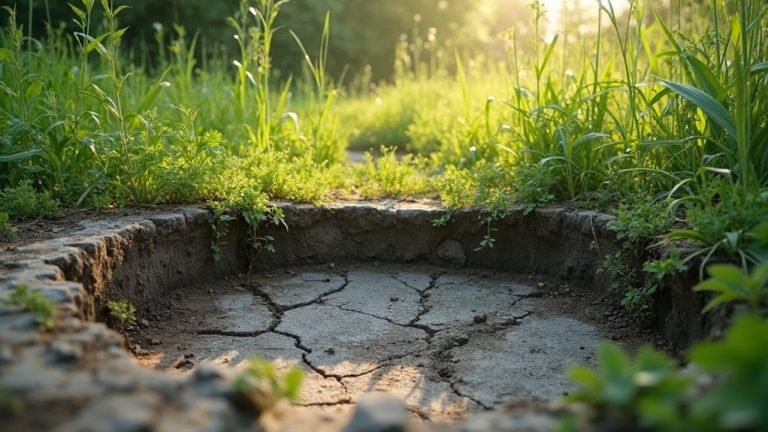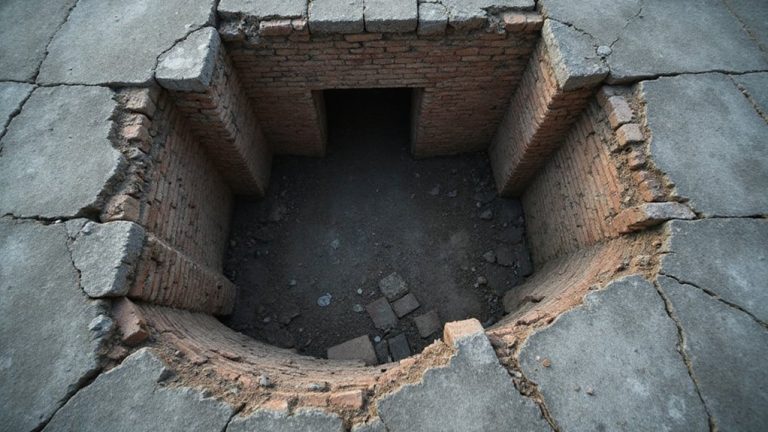Your home’s foundation is the backbone of your property, and when it’s compromised, the consequences can be disastrous. Poor drainage around the foundation is a common culprit behind many foundation issues, leading to soil erosion, uneven settling, and even structural damage. Understanding the connection between these two critical elements is the first step in safeguarding your home’s integrity and preventing costly repairs down the line.
Causes of Poor Drainage Around a Home Foundation
If your home’s foundation sits in poorly-drained soil, it can lead to a host of problems. Soil compaction and water pooling around the foundation are common culprits. Water seepage through foundation cracks can cause significant structural damage, particularly in areas with heavy rainfall like Cleveland, Ohio.
Over time, water can seep into cracks and cause the soil to shift, putting pressure on your home’s structure. This can result in uneven floors, cracks in the walls, and even foundation damage.
Addressing poor drainage is imperative to protecting your home’s integrity. By identifying and resolving drainage issues, you can prevent costly foundation repairs down the line and maintain a safe, stable living environment.
Effects of Poor Drainage on the Foundation
When poor drainage allows water to accumulate around your home’s foundation, it can wreak havoc on the structural integrity of your property. As water collects, it can cause soil erosion and fluctuations in the water table, leading to uneven settling and cracking of your foundation. This instability can compromise the load-bearing capacity of your home, potentially resulting in expensive repairs or even foundation failure. To prevent these issues, it’s essential to address drainage problems promptly and guarantee proper water management around your foundation. Disregarding this can jeopardize the safety and stability of your most significant investment. Bowing walls can be a direct consequence of prolonged water damage and soil pressure around the foundation.
Signs of Foundation Damage Due to Poor Drainage
Spotting the signs of foundation damage due to poor drainage can help you address the issue before it escalates. Cracks, sinking floors, and bowing walls are all indicators of water intrusion and soil erosion around your home’s foundation.
Pay attention to any changes, like doors and windows that no longer align or uneven floors, as they could signal underlying foundation problems. Acting quickly to improve drainage and address any issues can prevent further damage and costly repairs down the line.
Don’t wait until the problem becomes severe – stay vigilant for these telltale signs.
Identifying and Addressing Drainage Issues
Have you noticed persistent puddles or soggy soil around your home’s foundation? Pinpointing and tackling drainage problems is vital to avoiding expensive foundation damage.
Evaluate your terrain design – ensure proper grading and install drainage solutions like French drains or downspout extensions to redirect water away from the foundation.
Understand your soil type – clay soils are inclined to retaining moisture, while sandy soils drain more swiftly. Amend soil accordingly to enhance drainage.
Monitor the situation – address any new drainage issues promptly to safeguard your home’s structural stability.
Proper Grading and Slope Around the Foundation
Proper grading and slope around your home’s foundation are essential to directing water away from the structure. Guarantee there’s proper soil compaction and adequate slope maintenance.
The ground should slope away from the foundation at a minimum of 6 inches over the first 10 feet. This prevents pooling and allows water to flow away from your home. Regularly inspect the grade and make adjustments as needed.
Proper grading protects your foundation, safeguards against water damage, and preserves your home’s value. Taking these steps can give you peace of mind and help avoid costly repairs down the line.
Gutters, Downspouts, and Drainage Systems
While proper grading is important, your home’s gutters, downspouts, and drainage systems play an equally indispensable role in protecting your foundation. These components work together to effectively manage water flow around your home:
- Rain gutters collect and channel rainwater away from your foundation.
- Downspouts direct water from the gutters to a safe distance from your home.
- A well-designed drainage system, such as buried pipes or French drains, guarantees water is routed away from your foundation.
Properly maintaining these elements is key to preventing costly foundation damage.
Identifying and Repairing Foundation Cracks
If you’ve noticed concerning cracks in your home’s foundation, it’s important to address them promptly. A professional foundation crack evaluation can help determine the severity and underlying causes.
This structural integrity assessment will guide the appropriate repair approach, ensuring your home’s safety and stability. Whether the cracks are small or large, hairline or wide, a thorough inspection is indispensable.
Don’t delay – addressing foundation issues early can prevent further damage and costly remedies down the line. With the right proficiency, you can restore your home’s structural integrity and peace of mind.
Preventing Future Foundation Damage Through Effective Drainage
Addressing foundation issues doesn’t end with repairing cracks – you’ll also need to tackle the root cause. Effective drainage is critical for preventing future foundation damage:
- Install permeable paving systems to allow water to seep away from your home’s foundation.
- Implement a French drain system to collect and divert excess water away from the foundation.
- Grade the soil around your home to guarantee water flows away from the foundation rather than pooling.
Taking these proactive steps can save you from costly foundation repairs down the line. A well-designed drainage system is your best defense against foundation problems.
Frequently Asked Questions
Can Poor Drainage Cause Mold Growth in My Home?
Poor drainage can lead to excessive moisture levels in your home, providing perfect conditions for mold growth – a potential structural hazard that may impact your family’s health and safety.
How Much Does Foundation Repair Cost on Average?
Foundation repair costs average $4,000 to $15,000, but estimates can vary greatly based on the extent of the damage. Proper drainage is essential to prevent costly foundation issues.
How Long Does It Take to Fix a Drainage Issue?
Fixing a drainage issue typically takes 1-3 days. Regular drainage system maintenance and proper grading techniques can help you avoid these problems, keeping your home safe and secure.
Can I Install Drainage Myself or Do I Need a Professional?
You can DIY drainage installation if you’re handy, but a professional may be better to guarantee it’s done right. They have the skillset to appropriately address your drainage needs and prevent future foundation damage.
What Are the Long-Term Consequences of Neglecting Drainage Problems?
Neglecting drainage can lead to water table fluctuations, causing soil erosion that weakens your home’s foundation over time. This’ll cost you thousands to repair down the road – don’t let it happen to you!



